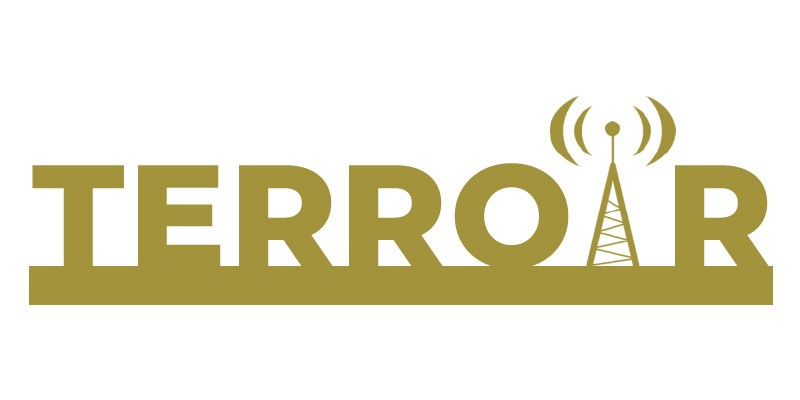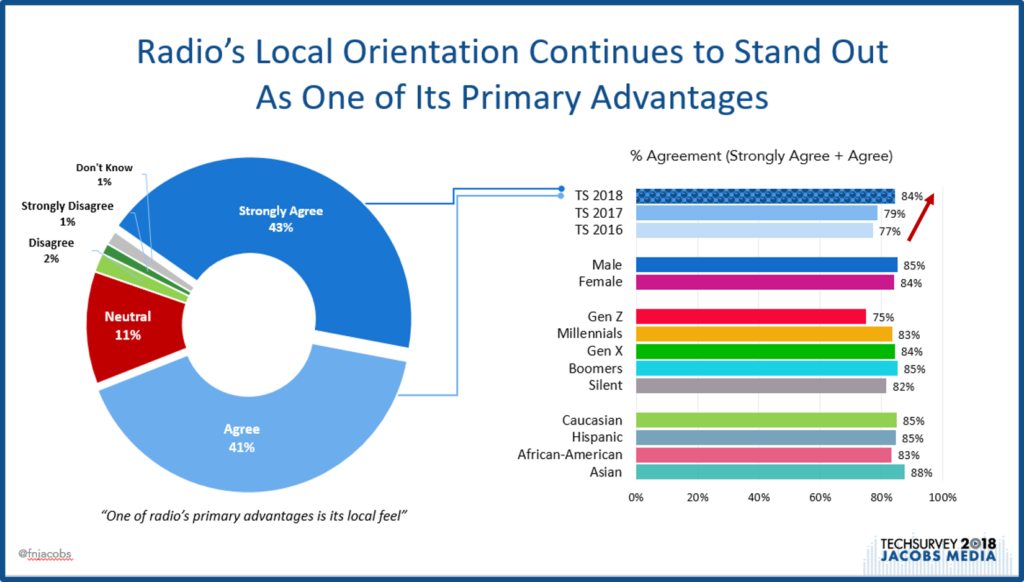
Yes, I know the correct phrase is “location, location, location.”
It’s a real estate term that points to the reality the most important attribute of your home, apartment, condo, office, restaurant, or store is where it is physically located. If you find a prime spot, that’s at least half the battle.
In radio, it’s a little different. You can be located just about anywhere, from Nome to New York City.
It’s how you serve your little community that is the difference-maker – not just in the in-market radio wars everyone engages in. It’s also about the global battle broadcast radio now faces as the broadcasters now find themselves competing with everyone – satellite radio, streaming pure-plays, podcasts, video, and syndicated personalities beamed in from other locations.
As my friend and mentor, Tom Bender, used to preach, a radio station is only as good as its ability to hold up a mirror to the audience and reflect that vibe, that sense of place, that local attitude.
That’s why my fellow consultants and I at Jacobs Media are always on the lookout for great, over the top promotions that ooze the local ethos and capture the hometown mindset. At a recent speech for a group of students, I was asked how I can tell whether a radio station is truly local.
And like that now-famous Supreme Court definition of pornography – “I’ll know it when I see it” – it’s very much the same way when I listen to radio stations in markets big, medium, and small. If the only city references are for the weather, traffic, or sales promotions, that’s not local. It’s generic radio that could be pretty much anywhere.
Looking at it another way, the latest torrent of monthly Nielsen PPM ratings will be analyzed by radio’s best and brightest, mostly staring at metrics and analytics. But if you look at most of the stations at or near the top of the heap in the ratings – 6+, 25-54, etc. – you’ll typically find the market leaders are almost all famous for intensely local radio – programming that could only work in their hometown markets.
As Seth Resler discussed in his guest post last week about the late Anthony Bourdain, consumers yearn for a sense of place. Great radio stations provide that context, reflecting their audience, their community – and what makes it all unique.
Seth talked about “Terroir,” which is a wine term suggesting that quality and taste are very much reflective of the natural environment. It’s no different with radio.

Great radio stations know their unique sound, their signature personalities, their community spirit, and their knowledge of what matters to their audience is very much a product of the local landscape.
And that’s why I always love promotions, charitable causes, morning show bits, and other activities that could only happen in St. Louis….in Wichita….in Norfolk….in Seattle. I treasure listening to morning shows talking about people, places, and events where I have no idea what they’re saying – because I don’t live in Anchorage, Anaheim, or Appleton.
Now, I know some people are skeptical of the “local argument,” suggesting that in today’s radio environment, it doesn’t really matter. But when you look at the core radio listening audience today – not an unimportant constituency – they give resounding approval to stations that embrace their hometown roots. Here’s this year’s Techsurvey 2018 response to the statement, “One of radio’s primary advantages is its local feel.”

More than eight in ten respondents agree or agree strongly with this statement – and the local concept becomes perceptually more important with each passing year. The other remarkable thing about the demographic breakouts on the right-hand side of the chart is how “unremarkable” they are. It’s difficult to find concepts that men and women, as well as respondents of all ages and ethnicities agree on. This is one of them.
I still hear many radio pundits point to the success of syndicated programming as proof that local doesn’t matter. And there’s no denying the ratings impact of personalities and teams like Bobby Bones, Dave Ramsey, Bob & Tom, and several others come to mind.
But I can also point to the dozens of radio stations that hitched their wagons to Howard Stern back in his terrestrial days. I worked with many of them, and sadly few survived Howard’s exodus to satellite radio. Many failed to develop their music positions, much less establishing other personalities on their staff. But perhaps the real failure was a lack of community connection and local roots, often overpowered by “The King of All Media.”
And it’s a lesson to stations reliant on national personalities, collective contesting, and other “scalable” solutions that threaten to suck the local life out of stations if their parent companies fail to also provide the direction, the funding, and the support necessary to build a strong hometown presence.

In tomorrow’s post, we’re going to look at three stations engaged in strategic and tactical activities that could only be pulled off in their hometown markets.
In the meantime, think about the roster of radio stations in your city or town. Which ones truly exude that local vibe? Which genuinely reflect the market ethos? Which ones would not be anywhere as successful in other markets because they’re so focused on what’s happening right at home?
We’ll take that local deep dive tomorrow.
- What To Do If Your Radio Station Goes Through A Midlife Crisis - April 25, 2025
- A 2020 Lesson?It Could All Be Gone In A Flash - April 24, 2025
- How AI Can Give Radio Personalities More…PERSONALITY - April 23, 2025




Although it sounds easier than it is, a radio station must build from the tower out. The second thing to remember – Every community, regardless of size, deserves good radio.
Bob, this is good stuff. Thanks for adding to the conversation.
Four foundational components driving radio programming success – not just
1. Local, but…
2. Live – most especially when the sense of urgency requires, and audience engagement is enhanced; such as with events/situations that impact the local audience. Live coverage (ideally with interaction with the audience and/or people impacting/being impacted by the event/situation) provides additional context/audience value that pre-recorded programming cannot duplicate.
Not just local and live, but expanding on two words highlighted by Mark Ramsey…
3. Unique – in the sense that no competitors are matching it in terms of what the audience will value in dimension/context; as well as being…
4. Compelling – when the audience wants to be part of that listening experience, as it gives them something to which they attach value that adds to their day – relevance, timeliness, emotional gratification.
All components, Andy. Read tomorrow’s post and let me know if you think my examples hit all four of those pillars. Thanks for chiming in.